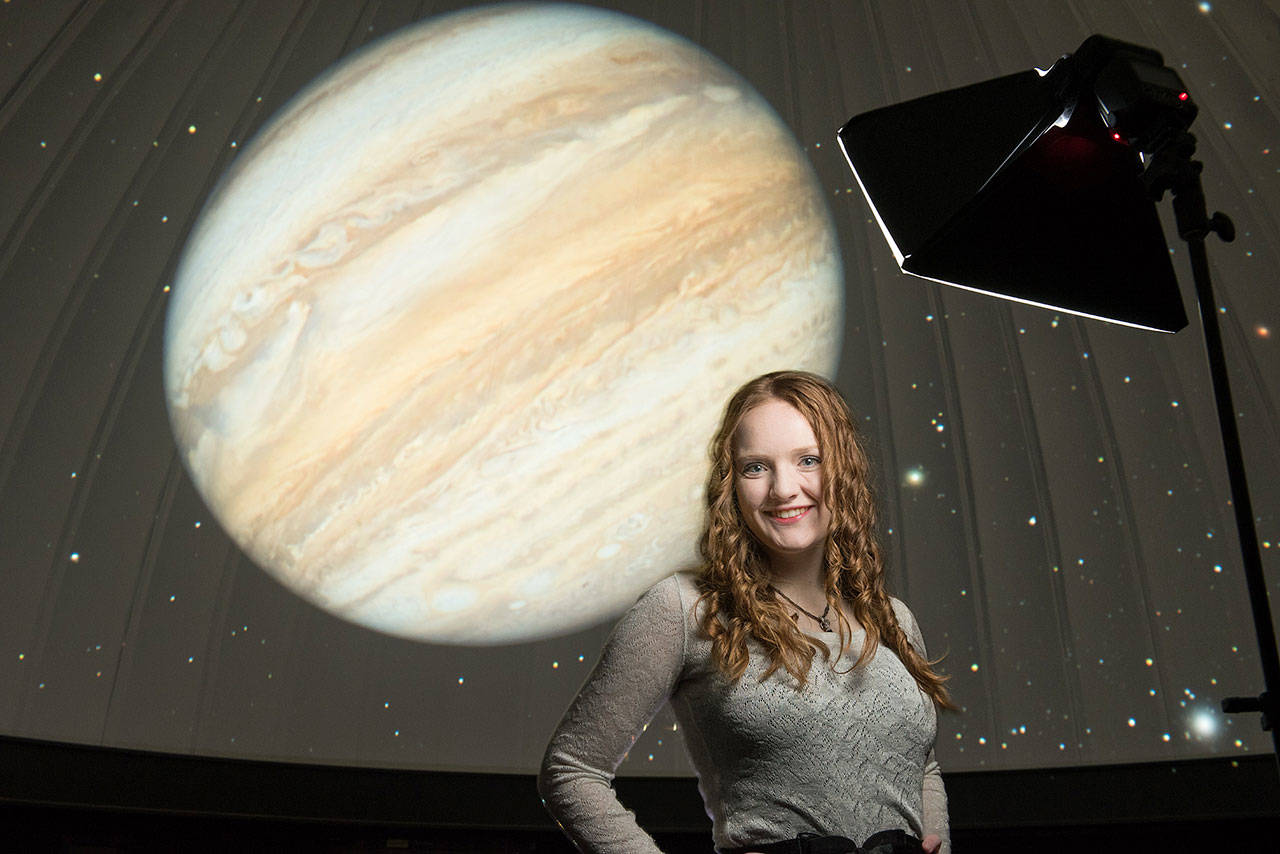MILL CREEK — She wondered about outer space as a girl, believing a mission to Mars is closer than many might think.
Now, at 26, she has discovered evidence confirming other scientists’ suspicions there might be a planet beyond Neptune.
Juliette Becker, a Henry M. Jackson High School graduate, is conducting research at the University of Michigan as a doctoral student. She has examined rocky objects in space, which are smaller than Pluto and seem to travel in the same direction on the outskirts of the solar system.
Here’s the hitch.
Over time, these rocks typically would crash into one another or ricochet out of the solar system.
Becker concluded that the gravitational pull from what has been dubbed “Planet Nine” would explain the phenomenon.
“I think it’s the coolest thing ever,” she said.
This planet could be 10 times the Earth’s mass. It has yet to be spotted, but astronomers are looking. It’s a fair distance away. Becker estimates the planet could be about 600 to 700 times as far away from the sun as is the Earth.
She believes it won’t be long until someone behind the lens of a telescope finds the planet.
Becker presented her findings earlier this month at a conference hosted by the American Astronomical Society’s Division of Planetary Sciences.
She has always been a bright student. Becker hopes to work as a research professor after graduation and to help other young scientists.
Her high school didn’t offer a college-level Advanced Placement physics class when she was a student, so an instructor volunteered to teach her. They studied every day after school before Becker’s track practice.
She applied lessons she learned in her science classes elsewhere.
One time she decided to extract DNA from strawberries at home. She mixed together a solution, threw in the berries and mashed it together. In the end, she was supposed to see a white, stringy material.
“That one didn’t go well,” she said. “At the time, I convinced myself I could see it, but I don’t think it worked as prescribed.”
Becker is now working toward her Ph.D in astronomy and astrophysics.
She learned about Planet Nine from a former professor at the California Institute of Technology, Konstantin Batygin. His research showed those rocky objects move in an elliptical orbit because of Planet Nine. They’re called Trans-Neptunian Objects, or TNOs.
“It has been a frenzy since last year, since Konstantin predicted the existence of Plwanet Nine,” Becker said.
About a dozen TNOs have been discovered so far. They are estimated to be a billion years old.
Becker has spent more than a year researching their movement. She ran computer simulations testing versions of Planet Nine with different gravitational forces to see how they affect TNOs. She found one that explains how the solar system works.
Becker located these TNOs in photos.
“They don’t emit light. They’re rocks, but they reflect light from the sun,” Becker said. “If you take multiple pictures, you’ll see a faint light moving.”
She used a computer algorithm to search through photos for glimmers of light.
She realized these TNOs can take different amounts of time to circle the sun, but they all align at the same point.
One nicknamed Caju moves on a much more tilted axis that others. It is about 24 degrees more inclined, Becker said.
“It will interact differently with the solar system, but it’s still aligned, which is pretty remarkable,” she said.
She also found that these TNOs can hop between different orbital paths. Without Planet Nine, they typically would be kicked loose in the galaxy. Gravity helps them stay in orbit.
There still are many unanswered questions about Planet Nine.
It is uncertain how a planet this big traveled as far away from the sun as it did.
Some have guessed the planet wasn’t always part of the solar system. Instead, it might have been traveling nearby and was captured.
Others have theorized the planet previously was closer to the sun and its orbit moved to its current location.
“I love the idea that even though we think we know a lot about the universe and how things work, the more I stay in this field, I realize we don’t know a lot,” Becker said.
Caitlin Tompkins: 425-339-3192; ctompkins @heraldnet.com.
Talk to us
> Give us your news tips.
> Send us a letter to the editor.
> More Herald contact information.

























